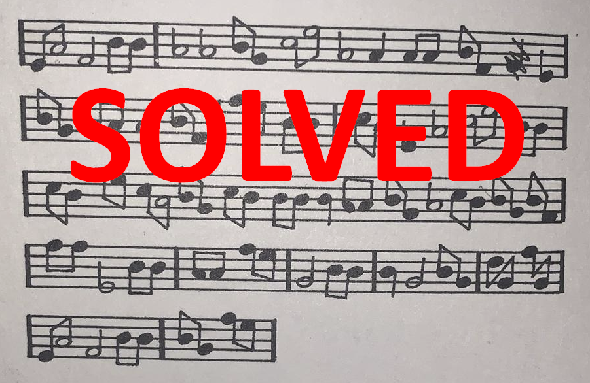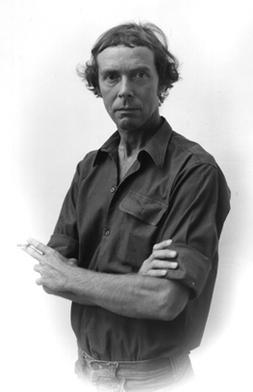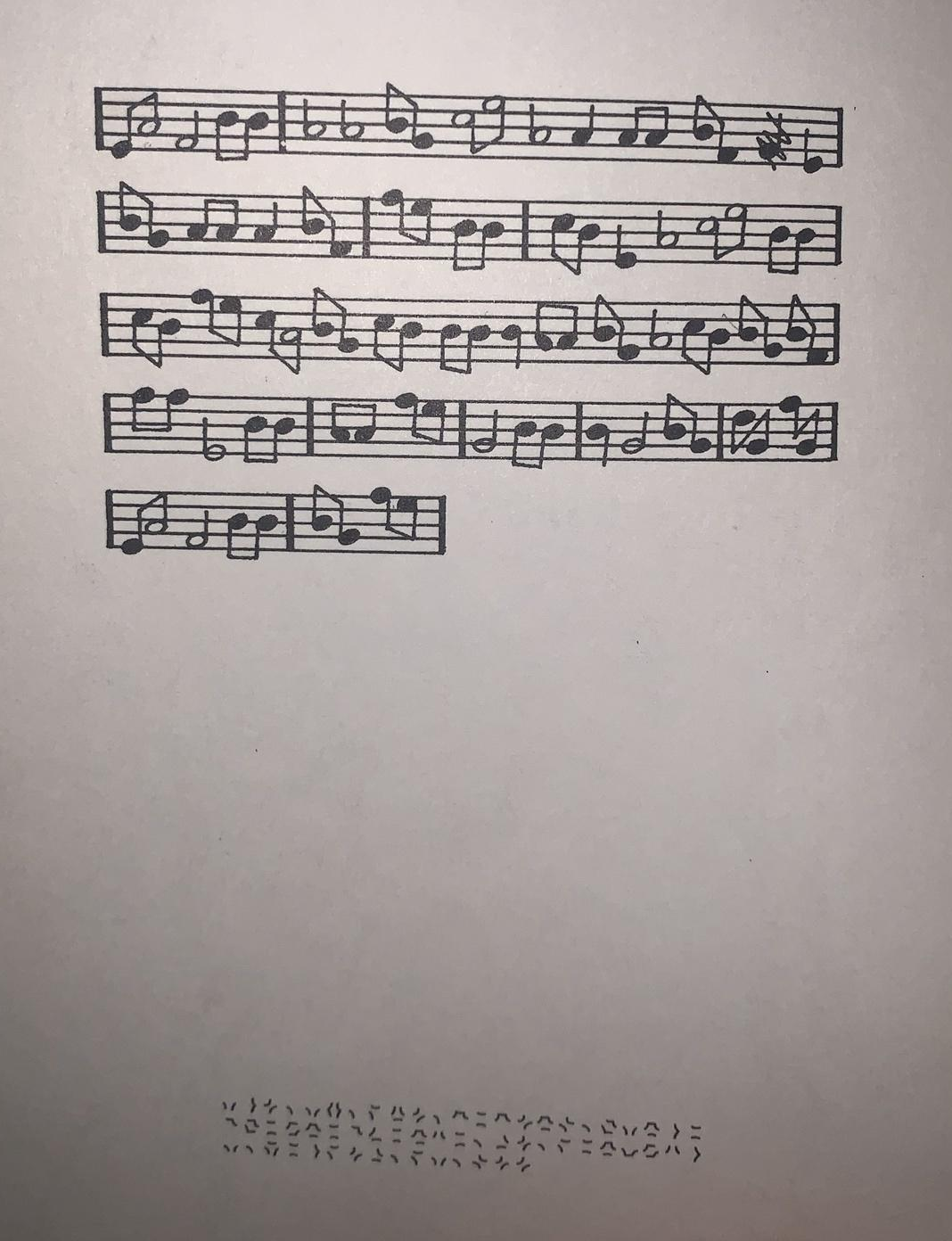Musical cryptogram by Guy de Cointet
solved
It’s called teamwork: three readers of this blog worked together to solve a cipher of notes by artist Guy de Cointet.
French-American artist Guy de Cointet (1934-1983) was interested in cryptography and incorporated coded messages into many of his works.
Oddly enough, word of de Coint’s work has never really reached the crypto scene. All the more I am glad that I could introduce this artist to my readers several times already.
The note cryptogram
Of particular interest is de Cointet’s book “A Captain from Portugal?”, which consists practically only of encrypted texts. My readers have already been able to decipher some of them. However, the following sheet music cryptogram was not one of them at first:
Theoretically, this could be a piece of music, but it would sound very strange. In addition, the bar lines and the eighth notes without filling make no sense. So it was to be expected that de Cointet had not written music here, but a coded message on paper.
The three lines below read decoded as follows (as Armin Krauß and Karo found out):
One of the papers Lorna Laura Maria de Tarquino wanted to see
Matthew Brown’s find
Two weeks ago, blog reader Matthew Brown found a 2018 paper by Marilou Thiébault that mentions the music cryptogram. It says de Cointet used a method from the cryptography book “Secret Writing” (1936) by Henry Lysing.
Unfortunately, Matthew did not have this book available. It is not on my shelf either.
Norbert Biermann’s first decryption step
However, Norbert Biermann, a musician, obtained a copy of the book in question and actually found the appropriate substitution table there. Each note stands for a letter, the bar lines for spaces. Norbert got the following result (the first note in the fourth line could not be decoded unambiguously, a C seemed most likely to Norbert):
VMK PPYXPEFZL YFEZ QK JLPXK JQSYJKTAYPJYZ CWK AQ GK TGY OU VMK YQ
Unfortunately, this text says nothing at first. Had de Cointet used a different process after all? Or was a second step still missing?
YefimShifrin’s solution
Blog reader YefimShifrin believed in a still missing decryption step and found it. After applying a Vigenère cipher, he got the following result:
THE INTRICATE WAYS OF DENSE CONSCIOURNESS ARE TO BE MET IN THE RO
The keyword used is CFGH if one sets A=0, B=1 etc.. If, on the other hand, one assumes A=1, B=2 etc., then one arrives at BEFG. Alternatively, one can use the number 2567 with the same result. However, neither CFGH nor BEFG nor 2546 makes a recognizable sense. Did de Cointet choose this combination arbitrarily?
Also the plain text tells me nothing. It looks incomplete. Can a reader say more about this? And what about the Lorna Laura Maria de Tarquino mentioned on the same page? I will gladly accept any pertinent information.
Regardless, I would like to congratulate Matthew, Norbert and Yefim on this solution. I am especially pleased that three blog readers have found each other here who, to my knowledge, have never met in person. This makes blogging fun!
If you want to add a comment, you need to add it to the German version here.
Follow @KlausSchmeh
Further reading: Die Listening Stones von Cheltenham (Teil 1): Der Playfair-Stein
Linkedin: https://www.linkedin.com/groups/13501820
Facebook: https://www.facebook.com/groups/763282653806483/





Letzte Kommentare